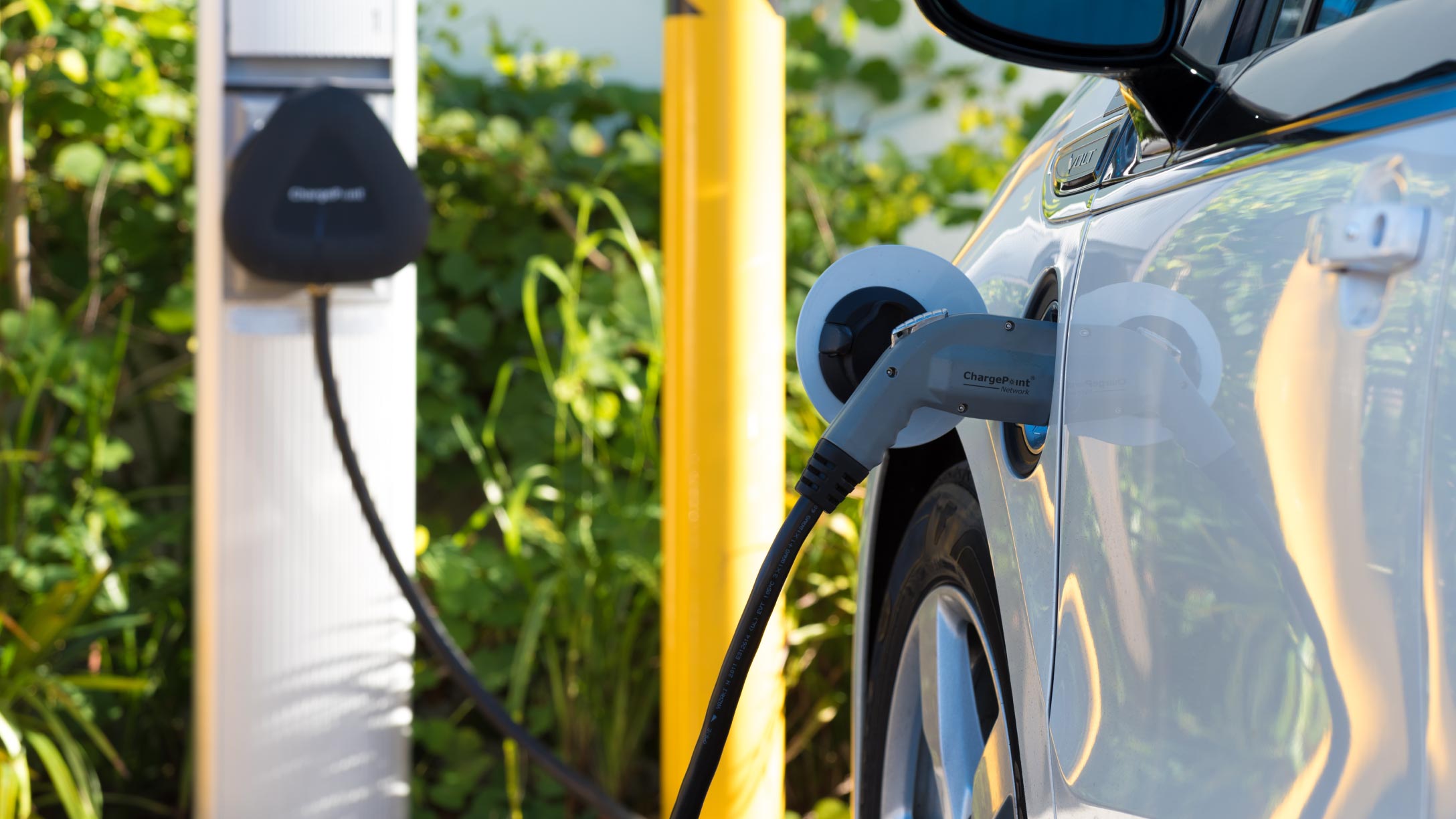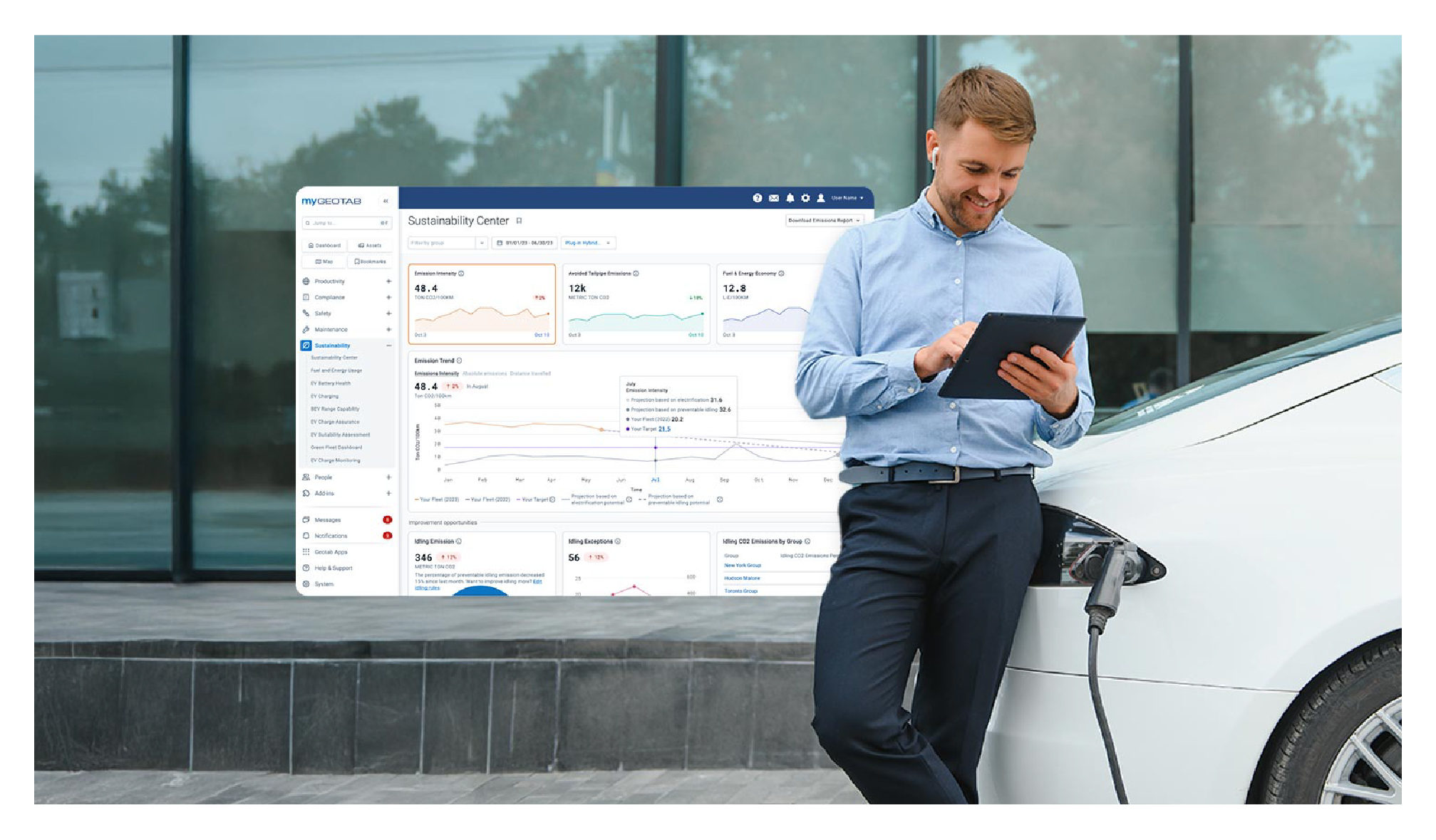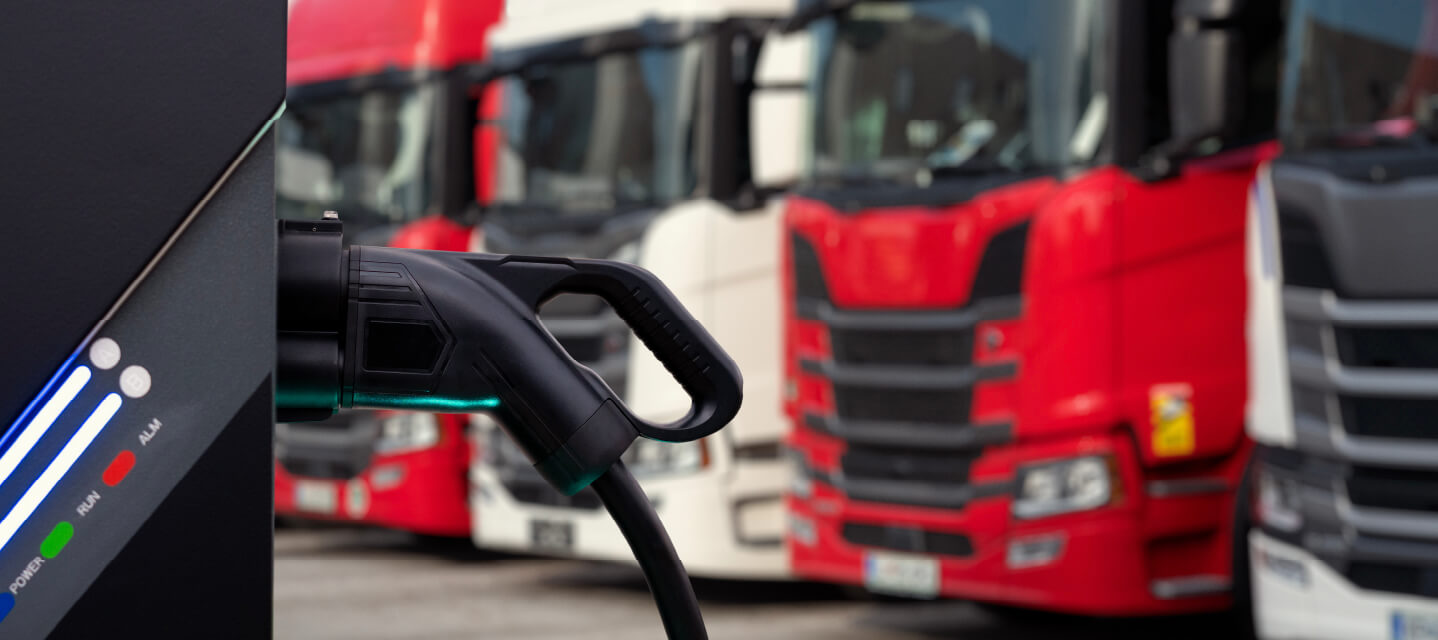The EV Journey Blog Series - Part 4: Operate electric
In the third article of our EV journey series, we looked at the initial considerations you need to make as you move your fleet to electric. Here, we look at the practicalities of running your electric vehicle operations to get the greatest range and lowest total cost of ownership out of them.
By Geotab Team
Jan 4, 2023

Control your charging operations
There are fundamental differences for fleets to understand when they transition to electric, and one of those is charging. While an internal combustion engine (ICE) vehicle can refuel from empty in a few minutes, this is not the case with electric vehicles (EVs). However, businesses instead gain the tremendous opportunity for their vehicles to start each shift fully charged. No more time wasted queuing at filling stations, as long as the vehicles effectively charge overnight and routes are planned around the attainable range from a single charge. This makes effective management of charging paramount to business continuity.
When each vehicle arrives back at a charging point, whether that’s at a depot or the employee’s home, you need to know that all vehicles are charging correctly. Specifically, you need to identify each vehicle’s state and rate of charge, so you can be sure they will all be ready for its next shift.
Geotab’s charge assurance dashboard provides this insight from each vehicle and charger, with the added ability to ingest data from other charge points. It also helps you to proactively resolve any charging issues, with warnings if an EV isn’t on track to reach its required battery level.
Establish protocols for public charging
While the vast majority of charging will occur on premises, it is still important for fleets to set a protocol for charging in the public domain. Individual drivers may decide to run their vehicles close to the limits of their range, making it vital for management to monitor state of charge and remaining route mileage. This provides you with confidence that all vehicles will successfully complete their shifts without running out of charge, and enables you to intervene in the rare cases where there is insufficient range to finish a route.
There should be a process in place to enable drivers to access public charging facilities when needed, at a reasonable cost. This may require drivers to have RFID tags or certain apps installed on their phones to access the charging networks that are most convenient to their routes.
Home charging also needs to be considered. You'll need the same state and rate of charge data if employees use a home chargepoint, so that you can have the same assurance that the vehicle will have the energy it needs for the next shift. To support the reimbursement process, you’ll also need to be able to confirm that the energy used to charge each vehicle was only that required for company purposes.
Practice preventative maintenance and repair
Just as with an ICE vehicle, you will maximise productivity and minimise total cost of ownership (TCO) by reducing EV downtime. This can be ensured through a preventative maintenance schedule, together with in-vehicle diagnostics.
The challenge for EVs is that in-vehicle data is not as readily available as it is for ICEs. The standard onboard diagnostics (OBD) port that is used to gather data for ICEs is not used in the same way by EVs. This is because the OBD port is used for emissions reporting, but most EVs don’t have any emissions to report on.
If a telematics provider wants to offer in-vehicle diagnostic data, they have to reverse engineer it. This is a complicated process, so most providers don't support many EVs as comprehensively as they do with ICEs. Geotab leads the field by offering support for 220 makes and models of EVs and counting. This gives you the essential data on your fleet, so that you can make real-time decisions to maintain the health of your vehicles.
While for ICE vehicles, warning lights might have been identified for low oil and adblue levels, it might be brake discs and battery faults for EVs. Although both are rare issues, they are important to monitor so you can reduce vehicle downtime.
Keep learning
To optimise your fleet of EVs, you need to constantly learn from them. One example of this is intelligent zoning. By studying the dwell locations and times of your vehicles, you may identify important charging locations. A heat map of vehicle dwell locations shows you where existing public charging infrastructure could be used, or if not available, where you could possibly deploy a charge point to increase vehicle range.
If a vehicle regularly stops in one location for 2 hours a day, a 22kW charger could provide an additional 60 miles and minimise headroom at the depot, as the vehicle will get some of its charge elsewhere.
Monitor battery degradation
To further reduce the TCO of your EVs, there is one important factor to monitor. This is battery degradation. The most fundamental marker of an EV’s health and therefore its resale value is the health of the battery, and there are a number of factors that can influence this beyond mileage.
A vehicle might have 100,000 miles on the odometer or 50,000, but fundamentally, how has the vehicle been charged and driven? If the lower mileage vehicle was regularly charged by a DC fast charger, this may have caused greater battery degradation than if the higher mileage vehicle was consistently charged by a 22kW charger. With Geotab’s battery degradation tool, you can produce a ‘battery health certificate’ when you come to sell the vehicle, ensuring the greatest resale value.
Operate EVs with absolute confidence
Running a fleet of EVs brings a great number of benefits, and presents a new set of challenges. By choosing a telematics provider that provides you with complete oversight of your charging operations, allows you to learn from your vehicles as they work, and then proves the health of the batteries when you come to sell them, you will be guaranteed the best return on investment, and the smoothest operations.
Check out our electric vehicle page to understand how Geotab can help you operate your electric fleet with total confidence.
And look out for the next article in the EV journey series, which looks at how to scale your electric fleet operations and identify further savings, so you can significantly reduce the carbon footprint of the fleet and reduce its impact on the environment.
Subscribe to the Geotab Blog
The Geotab Team write about company news.
Related posts

How integrated data can help last mile fleets move towards 100% EV adoption
August 29, 2025
3 minute read

How last mile fleets can initiate their electrification journey
August 29, 2025
3 minute read

How last mile fleets can reduce the carbon footprint of their current vehicles
August 29, 2025
2 minute read

Geotab’s new fleet Sustainability Center simplifies fuel and emissions reduction
June 13, 2025
3 minute read
.jpg)
Lead with Trust: How Geotab Helps Businesses Navigate CSRD Compliance
March 19, 2025
2 minute read
